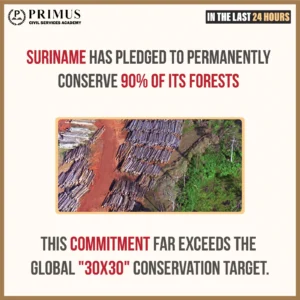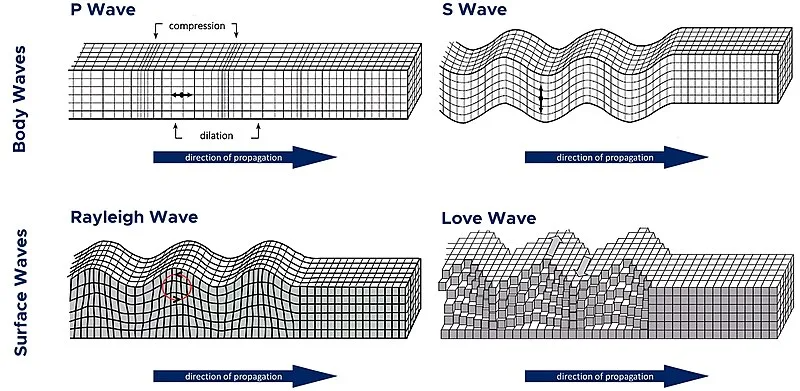October 03rd Current Affairs
Table of Contents
Kannada Literature Optional Syllabus
Home / ಐಚ್ಚಿಕ ಕನ್ನಡ ಸಾಹಿತ್ಯದ ಪಠ್ಯಕ್ರಮ ಐಚ್ಚಿಕ ಕನ್ನಡ ಸಾಹಿತ್ಯ ಪತ್ರಿಕೆ – 1 ವಿಭಾಗ – ಎ ಅ) ಕನ್ನಡ ಭಾಷೆಯ ಚರಿತ್ರೆ ಭಾಷೆ
UPSC Current Affairs – October 6th
October 06th Current Affairs Home / Table of Contents 36-hour curfew imposed in parts of Odisha’s Cuttack over communal tensions
Religious Minorities in India and the Challenge of Communal Harmony: A Sociological Reflection on the Cuttack Violence
Home / Religious Minorities in India and the Challenge of Communal Harmony: A Sociological Reflection on the Cuttack Violence Sociology
UPSC Current Affairs – October 4th
October 04th Current Affairs Home / Table of Contents Isabgol Processors threaten to halt purchases from October 6th over GST
Sologamy and Contemporary Trends in Marriage: A Sociological Perspective
Home / Sologamy and Contemporary Trends in Marriage: A Sociological Perspective Sociology Paper 1: Systems of Kinship – Contemporary trends
UPSC Current Affairs – October 3rd
October 03rd Current Affairs Home / Table of Contents NASA IMAP to show how solar particles are energised and shield
Understanding Indian Festivals through Durkheim: Religion, Rituals, and Collective Conscience
Home / Understanding Indian Festivals through Durkheim: Religion, Rituals, and Collective Conscience Sociology Paper 1: Émile Durkheim – Religion and
UPSC Current Affairs – September 30th
September 30th Current Affairs Home / Table of Contents Ladakh groups reject talks with government, Ministry says open to dialogue
Caste Census in India: A Sociological Perspective
Home / Caste Census in India: A Sociological Perspective Sociology Paper 2: Caste System – Features of Caste system. The
Constitutional Morality: Upholding India’s Democratic Ethos
Home / Constitutional Morality: Upholding India’s Democratic Ethos Sociology Paper 2: Visions of Social Change in India – Constitution, law,
NASA IMAP to show how solar particles are energised and shield us

Relevance to UPSC
GS Paper 3: Science & Technology
- Space science, astrophysics & satellite missions.
- India’s efforts in building similar missions.
More About the News
- NASA’s IMAP (Interstellar Mapping and Acceleration Probe) mission will investigate how solar charged particles are energized (forming the solar wind) and how the heliosphere acts as a protective bubble shielding the solar system from harmful cosmic radiation.
- IMAP is planned to operate from the Sun–Earth L1 Lagrange point, giving it an uninterrupted view toward the Sun to monitor particle flows and provide near-real-time data on solar wind.
- The mission’s data will improve space weather forecasting, offering an advance warning (≈30 minutes) of harmful radiation events that could impact satellites, power systems, and astronaut safety.
Solar Storms
A solar storm is a disturbance on the Sun that releases large amounts of energy and charged particles into space. These storms include phenomena such as solar flares, coronal mass ejections (CMEs), and high-speed solar wind streams, which can interact with Earth’s magnetosphere and atmosphere, impacting technological systems and natural processes.
Features of Solar Storms
- Sudden release of magnetic energy from the Sun’s surface, causing solar flares.
- Ejection of massive clouds of charged particles into space (CMEs).
- Often accompanied by solar energetic particles (SEPs), which travel near light speed.
- Can vary in intensity and duration, from hours to days.
- Typically occur in regions of intense solar magnetic activity (sunspots).
Sun’s Activity Cycle
- The Sun follows an 11-year solar cycle, alternating between solar maximum (high activity) and solar minimum (low activity).
- During solar maximum, the frequency of sunspots, solar flares, and CMEs increases.
- Solar cycles influence space weather conditions and the likelihood of solar storms affecting Earth.
Impacts on Earth’s Surface
- Geomagnetic storms can disrupt satellite operations, GPS navigation, and communication networks.
- Power grids may experience voltage fluctuations or blackouts.
- Increased radiation exposure for astronauts and passengers in high-altitude flights.
- Auroras (Northern and Southern Lights) become visible at lower latitudes.
- Potential long-term effects on climate and atmospheric chemistry (minor but measurable).
Missions to Study Solar Activity
- NASA’s Parker Solar Probe – studying the Sun’s corona and solar wind up close.
- ESA/NASA Solar Orbiter – mapping solar magnetic fields and observing CMEs.
- NASA IMAP (Interstellar Mapping and Acceleration Probe) – monitoring how solar particles are energized and interact with the heliosphere.
- SOHO (Solar and Heliospheric Observatory) – long-term solar observation and space weather forecasting.
- Aditya L1 (India): Launched in 2023, it is India’s inaugural space mission specifically designed to study and observe the Sun.
Solar storms will remain a critical area of study as society becomes increasingly dependent on technology sensitive to space weather. Advances in monitoring, forecasting, and resilient infrastructure can mitigate potential disruptions. Future international collaborations and next-generation solar missions will be crucial for protecting Earth and enabling safe space exploration.
Prelims MCQ
Q. If a major solar storm (solar flare) reaches the Earth, which of the following are the possible effects on the Earth? (PYQ 2022) 1. GPS and navigation systems could fail. 2. Tsunamis could occur at equatorial regions. 3. Power grids could be damaged. 4. Intense auroras could occur over much of the Earth. 5. Forest fires could take place over much of the planet. 6. Orbits of the satellites could be disturbed. 7. Shortwave radio communication of the aircraft flying over polar regions could be interrupted. Select the correct answer using the code given below:
A. 1, 2, 4 and 5 only
B. 2, 3, 5, 6 and 7 only
C. 1, 3, 4, 6 and 7 only
D. 1, 2, 3, 4, 5, 6 and 7
Mains Question
Q. Solar storms pose significant risks to Earth’s technological infrastructure and space missions. Examine the causes and impacts of solar storms, assess India’s preparedness for space weather events, and suggest measures to enhance resilience in critical sectors.
Polar geoengineering projects could cause severe harm, scientists say

Relevance to UPSC
GS Paper I: Geography
- Illustrates potential impacts of climate intervention strategies on polar ecosystems, ocean circulation, and global climate patterns — relevant for topics like Climate Change, Polar Regions, Environmental Geography.
- Highlights the interconnectedness of Earth systems: altering ice sheets or ocean currents in the polar regions could have cascading effects on weather, sea level, and global climatic stability.
GS Paper III: Environment & Disaster Management
- Raises concerns about the unintended consequences of geoengineering projects on ecosystems, fisheries, and coastal communities, linking to risk assessment, technological interventions, and sustainable development.
- Serves as a case study for policy challenges: balancing innovation in climate mitigation with precautionary principles, ethical considerations, and international cooperation to prevent cross-border environmental harm.
More About the News
- Scientists have evaluated five leading proposals for polar geoengineering (e.g. pumping seawater to thicken ice, sea curtains, scattering reflective particles) and warn that none are practically viable as they may cause harm, be extremely costly, or introduce unintended ecological damage.
- Such interventions risk disrupting marine ecosystems, altering ocean circulation, undermining climate goals, and reducing incentives for emissions cuts.
- The consensus is that efforts and resources should instead focus on deep decarbonization, emission reduction, and nature-based climate solutions rather than speculative geoengineering in fragile polar environments.
Climate Change in the Polar Region
Climate change refers to long-term alterations in temperature, precipitation, wind patterns, and other climatic factors on Earth, largely driven by human activities such as fossil fuel combustion, deforestation, and industrial emissions. The polar regions—Arctic and Antarctic—are highly sensitive indicators of global climate change due to rapid ice melt, rising temperatures, and ecosystem vulnerability.
Causes of Climate Change in the Polar Region
- Greenhouse Gas Emissions: CO₂, CH₄, and N₂O from industrial activities increase global temperatures and accelerates polar ice melting.
- Ozone Depletion: Antarctic ozone hole increases UV radiation, affecting climate and ecosystems.
- Black Carbon Deposition: Soot from wildfires and fossil fuel burning darkens ice surfaces, increasing heat absorption.
- Oceanic Changes: Warming oceans cause sea-ice reduction and glacier retreat.
- Global Warming Feedback Loops: Melting ice reduces the albedo effect, further accelerating regional warming.
Impacts of Climate Change in Polar Regions
- Ice Sheet and Glacier Melting: Rising sea levels globally (e.g., Greenland Ice Sheet loss contributing 0.7 mm/year to sea level rise).
- Loss of Habitat: Polar bears and penguins are losing breeding grounds due to melting ice.
- Ocean Acidification: Affecting krill and fish populations in the Southern Ocean.
- Extreme Weather Events: Increased storms in Northern Europe linked to Arctic warming.
- Permafrost Thawing: Release of methane in Siberia, amplifying greenhouse gas emissions.
Challenges in Containing Climate Change in Polar Regions
- Geographical Remoteness: Difficult to monitor and implement policies, e.g., Antarctic research stations face logistical challenges.
- Global Emissions Dependency: Local action alone is insufficient, e.g., Arctic warming driven by global fossil fuel consumption.
- Political and Legal Complexities: Multiple countries with territorial claims hinder unified action, e.g., Arctic Council negotiations.
- High Cost of Mitigation Technologies: Deployment of renewable energy or carbon capture in polar regions is expensive.
- Limited Public Awareness & Engagement: Polar issues are often distant from public consciousness, reducing global policy urgency.
Challenges in Containing Climate Change in Polar Regions
- Geographical Remoteness: Difficult to monitor and implement policies, e.g., Antarctic research stations face logistical challenges.
- Global Emissions Dependency: Local action alone is insufficient, e.g., Arctic warming driven by global fossil fuel consumption.
- Political and Legal Complexities: Multiple countries with territorial claims hinder unified action, e.g., Arctic Council negotiations.
- High Cost of Mitigation Technologies: Deployment of renewable energy or carbon capture in polar regions is expensive.
- Limited Public Awareness & Engagement: Polar issues are often distant from public consciousness, reducing global policy urgency.
Role of India in Mitigating Climate Change
- Participates in Arctic Council observer programs to understand climate impacts.
- Conducts research through the Indian Antarctic Program and the National Centre for Polar and Ocean Research (NCPOR).
- Advocates sustainable development, emission reduction, and renewable energy globally.
Initiatives Taken in India
- National Action Plan on Climate Change (NAPCC): Promotes solar, wind, and energy efficiency initiatives.
- State Action Plans on Climate Change (SAPCCs): Localized mitigation and adaptation measures.
- International Collaboration: India supports global climate agreements like Paris Agreement.
Global Initiatives
- Paris Agreement (2015): Limit global temperature rise to below 2°C.
- UNFCCC & IPCC: Scientific monitoring and policy guidance for climate mitigation and adaptation.
Best Practices
Indian:
- Solar Energy Missions (e.g., Bhadla Solar Park, Rajasthan), reduces dependency on fossil fuels.
- Afforestation Programs: Increases carbon sequestration, e.g., Green India Mission.
Global:
- Norway’s Carbon Capture & Storage (CCS) Projects: Reduces industrial CO₂ emissions.
- Iceland’s Renewable Geothermal Energy Usage: Provides low-carbon energy, reducing greenhouse gas footprint.
Way Forward
- Strengthen international cooperation for polar conservation and research.
- Promote renewable energy adoption and carbon neutrality in industrial and urban sectors.
- Enhance early warning systems and climate adaptation strategies for vulnerable regions.
- Increase public awareness and scientific outreach on polar climate risks.
Climate change in the polar regions poses a profound threat to global ecological balance, sea levels, and weather patterns. Sustained global efforts combining research, policy action, and renewable technologies are essential to mitigate these impacts. Future strategies must integrate international cooperation, scientific innovation, and local adaptation measures to protect polar ecosystems and ensure planetary resilience.
Prelims MCQ
Q. Which of the following statements is/are correct about the deposits of ‘methane hydrate’? (PYQ 2019) 1. Global warming might trigger the release of methane gas from these deposits. 2. Large deposits of ‘methane hydrate’ are found in Arctic Tundra and under the sea floor. 3. Methane in the atmosphere oxidizes to carbon dioxide after a decade or two. Select the correct answer using the code given below:
A. 1 and 2 only
B. 2 and 3 only
C. 1 and 3 only
D. All of the above
Mains Question
Q. The polar regions are warming at more than twice the global average, with significant ecological and socio-economic consequences. Examine the causes, impacts, and challenges of climate change in the polar regions, and discuss India’s role along with global initiatives in mitigating these effects.
Suriname pledges to shield 90% of forests, far beyond global conservation goal

Relevance to UPSC
GS Paper I: Geography
- Highlights the role of tropical forests in global climate regulation, biodiversity conservation, and carbon sequestration.
- Illustrates the significance of forest cover in the Amazon region and its impact on regional and global weather patterns.
GS Paper III: Environment & Disaster Management
- Raises issues related to the enforcement of environmental laws, recognition of Indigenous land rights, and sustainable development practices.
More About the News
- Suriname has pledged to permanently protect 90% of its tropical forests, surpassing the global “30×30” conservation goal.
- The commitment includes updating conservation laws and recognizing Indigenous and Maroon land rights to strengthen forest protection.
- A coalition of environmental donors has committed $20 million to support the initiative and promote sustainable livelihoods.
What is "30x30"?
The “30×30” initiative is a global biodiversity conservation target aimed at protecting 30% of Earth’s land and marine areas by 2030. It seeks to halt biodiversity loss, preserve ecosystems, and mitigate climate change impacts, aligning with the UN Convention on Biological Diversity (CBD) and the post-2020 Global Biodiversity Framework.
Origin of 30x30
- Proposed under The UN Convention on Biological Diversity (CBD) as part of the Aichi Biodiversity Targets follow-up.
- Gained global momentum during the COP15 of CBD, Montreal 2022.
- Supported by the scientific community and environmental NGOs to counter accelerating habitat loss.
- Endorsed by major economies including the US, EU, and China.
- Integrated with sustainable development goals (SDG 14 & 15) for ecosystem protection.
Targets of the 30x30 initiative
Protect 30% of terrestrial areas by 2030 to conserve biodiversity and ecosystems.
Protect 30% of marine areas by 2030, including oceans, coral reefs, and coastal habitats.
Enhance ecological connectivity by creating wildlife corridors and linking protected areas.
Prevent species extinction by conserving habitats of endangered flora and fauna.
Restore degraded ecosystems to improve carbon sequestration and resilience against climate change.
Integrate community participation to ensure sustainable management and benefit-sharing.
Support climate change mitigation through nature-based solutions like forests, wetlands, and mangroves.
Promote global cooperation to meet conservation goals across nations and transboundary regions.
Need for 30x30
- Global Biodiversity Protection: Conserves critical ecosystems like the Amazon rainforest.
- Climate Change Mitigation: Forests and mangroves act as carbon sinks, e.g., Sundarban mangroves in India.
- Prevent Species Extinction: Protects endangered species, e.g., Bengal tiger in India.
- Sustainable Livelihoods: Supports eco-tourism and forest-based livelihoods, e.g., Kerala’s wildlife reserves.
- Enhance Resilience to Natural Disasters: Forested watersheds reduce floods, e.g., Western Ghats catchment areas.
Impacts of 30x30
- Ecosystem Preservation: Coral reefs like the Great Barrier Reef get formal protection.
- Carbon Sequestration: Forest conservation in the Congo Basin reduces atmospheric CO₂.
- Water Security: Conserved watersheds improve freshwater availability, e.g., Himalayan rivers.
- Biodiversity Hotspot Protection: Western Ghats and Indo-Burma regions are conserved under India’s biodiversity programs.
- Economic Benefits: Promotion of eco-tourism and sustainable forestry creates jobs.
Challenges Faced
- Land Ownership Conflicts: Indigenous rights may conflict with protected areas, e.g., Amazon tribes.
- Funding Constraints: Conservation requires huge investments, e.g., marine protected areas in developing nations.
- Monitoring & Enforcement Issues: Illegal logging or poaching persists, e.g., poaching in African reserves.
- Balancing Development & Conservation: Infrastructure projects sometimes encroach on protected zones, e.g., highways through wildlife corridors in India.
- Climate Change Feedbacks: Even protected areas may degrade due to rising temperatures, e.g., Arctic ecosystems.
Steps India Has Taken to Adopt 30x30
- Expanding Protected Areas Network: 104 national parks, 566 wildlife sanctuaries covering ~5% of land under strict protection.
- Mangrove and Wetland Conservation: E.g., Sundarbans and Chilika Lake projects.
- Biodiversity Act & National Biodiversity Action Plan: Legal framework supporting habitat protection.
- Community-led Conservation: Eco-sensitive zones and Joint Forest Management programs.
- Integration with Climate Goals: Linking forest cover and carbon sequestration targets under NAPCC.
Global Measures
- Paris Agreement: Forest and ocean conservation as part of climate mitigation.
- UN Decade on Ecosystem Restoration (2021–2030) → Encourages global ecosystem protection.
- Marine Protected Areas Expansion → E.g., Pacific Ocean’s high seas protection.
- Payment for Ecosystem Services (PES) → Incentivizes local communities for conservation.
Way Forward
- Strengthen international cooperation for transboundary ecosystems.
- Enhance financial and technological support for developing nations’ conservation programs.
- Integrate community participation and Indigenous knowledge into conservation policies.
- Use GIS, remote sensing, and AI for monitoring protected areas effectively.
- Balance development needs and conservation priorities through sustainable planning.
The 30×30 initiative offers a transformative approach to conserve biodiversity while addressing climate change. Its success hinges on coordinated global action, local community involvement, and sustainable policy implementation. Future strategies must combine scientific innovation, policy enforcement, and public awareness to protect ecosystems for generations to come.
Prelims MCQ
Q. “Momentum for Change: Climate Neutral Now” is an initiative launched by (PYQ 2018)
A. The Intergovernmental Panel on Climate Change
B. The UNEP Secretariat
C. The UNFCCC Secretariat
D. The World Meteorological Organisation
“Momentum for Change: Climate Neutral Now” was launched by the UNFCCC Secretariat in 2015. It is part of the Momentum for Change initiative, aimed at promoting climate neutrality. Climate neutrality follows a three-step process: Measure the climate footprint of individuals, companies, and governments. Reduce emissions as much as possible. Offset remaining emissions using UN-certified emission reductions. This structured approach is why option (c) – UNFCCC Secretariat is the correct answer.
Mains Question
Q. The ’30×30′ global conservation target aims to protect 30% of terrestrial and marine areas by 2030. Discuss its significance, potential impacts, and challenges. Evaluate India’s approach and suggest measures for effective implementation.
Cabinet gives approval to 57 new Kendriya Vidyalayas

Relevance to UPSC
GS Paper II: Governance & Social Justice
- Demonstrates efforts to address regional disparities in educational infrastructure, particularly in underserved and aspirational districts.
- Illustrates inter-governmental coordination between the Union and State/UT authorities in implementing educational initiatives.
- Illustrates inter-governmental coordination between the Union and State/UT authorities in implementing educational initiatives.
More about the News
- The Union Cabinet approved the establishment of 57 new Kendriya Vidyalayas across 17 states and Union Territories, with a total financial outlay of ₹5,862.55 crore over nine years, starting from 2026–27.
- For the first time, these KVs will include Balvatikas, providing three years of foundational pre-primary education, in alignment with the National Education Policy (NEP) 2020.
- The initiative aims to benefit over 86,000 students and create 4,617 permanent teaching and non-teaching jobs, enhancing educational access and employment opportunities.
National Education Policy (NEP), 2020
The National Education Policy (NEP), 2020 is India’s landmark framework to transform education from foundational to higher levels, emphasizing equity, quality, holistic learning, and skill development. It aims to align India’s education system with 21st-century needs, global standards, and Sustainable Development Goals (SDG 4 – Quality Education).
Constitutional and Statutory Provisions for Education
- Article 21A: Right to free and compulsory education for children aged 6–14 years.
- Article 45: Early childhood care and education.
- Article 51A (k): Duty of parents/guardians to provide education to children.
- RTE Act, 2009: Legal mandate ensuring free and compulsory education.
- UGC Act, 1956 & AICTE Act, 1987: Regulatory frameworks for higher education.
What is NEP 2020?
- A comprehensive policy framework covering school, higher, vocational, and adult education.
- Seeks to create a multidisciplinary, flexible, and holistic learning environment.
- Emphasizes technology integration, mother tongue instruction, and critical thinking skills.
Provisions of NEP 2020
- School Education: 5+3+3+4 structure (Foundational, Preparatory, Middle, Secondary).
- Medium of Instruction: Preferably mother tongue/local language till grade 5, optionally till grade 8.
- Higher Education: Multidisciplinary universities, flexible curricula, 4-year undergraduate programs.
- Vocational Education: Integration from grade 6 onwards.
- Teacher Training: Continuous professional development and higher qualification standards.
- Technology: Digital education platforms, AI, and virtual labs.
- Inclusive Education: Special focus on girls, differently-abled, and disadvantaged groups.
How is NEP Different from Earlier Policies
- Moves from 2-tier (primary & secondary) to 4-tier school structure (5+3+3+4).
- Focuses on flexible, multidisciplinary higher education versus rigid streams earlier.
- Mother tongue/local language instruction emphasized, unlike previous emphasis on English/Hindi.
- Promotes vocational education from grade 6 onwards, not just at higher secondary or college.
- Integrates technology, innovation, and research at all levels.
Targets under NEP
- 100% enrollment in school education from pre-primary to secondary by 2030.
- Achieve universal foundational literacy and numeracy by Grade 3.
- 50% of learners in vocational education by 2025.
- Establish multidisciplinary higher education institutions with 4-year undergraduate programs.
- Raise Gross Enrollment Ratio (GER) in higher education to 50% by 2035.
Major Achievements of NEP
- Launch of National Educational Technology Forum (NETF).
- Introduction of e-content, virtual labs, and online platforms (DIKSHA, SWAYAM).
- Promotion of regional language textbooks and curricula.
- Emphasis on early childhood care and pre-primary expansion.
- Integration of skill and vocational education in school curriculum.
Advantages and Disadvantages of NEP 2020
Advantages | Disadvantages |
Promotes holistic and multidisciplinary education. | Implementation challenges due to teacher shortage. |
Emphasis on mother tongue instruction improves comprehension. | May disadvantage English-medium students in urban areas. |
Integrates vocational and skill-based education early. | Infrastructure gaps in rural schools hinder effective delivery. |
Encourages technology and online learning. | Digital divide may exclude marginalized students. |
Focus on research and higher education reforms. | Merging colleges/universities may face bureaucratic delays. |
Criticism Faced
- Medium of Instruction Controversy: Possible disadvantage for English-medium students; parents in urban areas often prefer English.
- Implementation Challenges in Rural Areas: Lack of trained teachers for mother tongue instruction.
- Higher Education Reforms Slow: Restructuring universities is complex, example: merging colleges into multidisciplinary universities.
- Digital Divide: Online learning platforms may exclude rural students without internet access.
- Vocational Education Readiness: Schools may lack infrastructure and industry partnerships for effective vocational training.
Challenges in Implementation
- Teacher Shortage and Training Gaps: Limited professional development opportunities in rural areas.
- Infrastructure Constraints: Insufficient classrooms, labs, and digital facilities.
- Curriculum and Assessment Overhaul: Aligning exams to holistic learning is challenging.
- Language Policy Conflicts: Balancing regional and national languages in multi-lingual states.
- Funding & Governance: Budget constraints and coordination between central and state governments.
Government Initiatives to Implement NEP
- DIKSHA platform: Digital learning for students and teachers.
- SWAYAM: Online courses for higher education and vocational training.
- National Mission on Foundational Literacy and Numeracy (FLN).
- Setting up NETF: For technology integration and innovation.
- Teacher Education Reforms: Upgrading teacher qualifications and training.
Way Forward
- Strengthen state-level implementation frameworks.
- Expand teacher training and professional development programs.
- Improve digital access in rural and remote areas.
- Encourage public-private partnerships for infrastructure and vocational education.
- Monitor learning outcomes and curriculum effectiveness regularly.
NEP 2020 sets a transformative vision for India’s education system, emphasizing quality, equity, and 21st-century skills. Its success depends on effective implementation, infrastructure development, and teacher capacity building. In the future, NEP can position India as a global hub of holistic and inclusive education if these challenges are addressed systematically.
Prelims MCQ
Q.
Which of the following statements about NEP 2020 is/are correct?
1. NEP 2020 recommends a 5+3+3+4 school structure.
2. It mandates English as the medium of instruction till grade 8.
3. NEP emphasizes vocational education starting from grade 6.
4. NEP proposes 4-year undergraduate programs with multiple exit options.
A. 1, 2 and 3 only
B. 1, 3 and 4 only
C. 2 and 4 only
D. 1, 2, 3 and 4
NEP recommends the 5+3+3+4 structure, not English medium till grade 8 (mother tongue preferred). Vocational education starts from grade 6 to enhance skills. Higher education reforms include 4-year undergraduate programs with multiple exit options.
Mains Question
Q. The National Education Policy (NEP), 2020, aims to transform India’s education system by emphasizing quality, equity, and skill development. Critically analyze its key provisions, advantages, and challenges. Suggest measures to ensure effective implementation at the school and higher education levels.
Gangsters contracted to kill comedian Munawar Faruqi held in Delhi after the gunfire exchange

Relevance to UPSC
GS III: Internal Security, Law Enforcement & Organised Crime
- Highlights the threat posed by organized crime syndicates and their capacity to orchestrate targeted killings, posing challenges to internal security.
- Emphasizes the need for advanced intelligence gathering, inter-agency coordination, and technological tools to combat organized crime effectively.
- Demonstrates the complexities law enforcement faces in dismantling criminal networks and preventing violent incidents in urban settings.
More about the News
- Delhi Police arrested gangsters who were contracted to assassinate comedian Munawar Faruqui, following a gunfire exchange during their apprehension.
- The gangsters were allegedly hired by associates of gangster Lawrence Bishnoi, known for orchestrating high-profile killings.
- The police action underscores the ongoing challenges posed by organized crime syndicates and the importance of vigilant law enforcement.
Organised Crime
Organised crime refers to structured groups committing crimes primarily for financial or material gain. According to the United Nations Convention against Transnational Organised Crime (UNTOC, 2000), an organised criminal group is defined as a group of three or more persons acting in concert over a period of time to commit serious crimes for financial or other material benefit.
Background of Organised Crime
- Originated historically in Italy (Mafia) and later spread globally.
- Driven by economic disparity, political instability, and demand for illicit goods/services.
- Modern organised crime operates transnationally due to globalisation, technology, and porous borders.
- Often exploits legal loopholes, corruption, and weak enforcement mechanisms.
Characteristics of Organised Crime
- Hierarchy and Structure: Clearly defined leadership and operational roles.
- Profit Motive: The main aim is financial gain through illicit activities.
- Continuity and Planning: Crimes are planned systematically and sustained over time.
- Use of Violence and Corruption: To intimidate, coerce, or influence authorities.
- Transnational Linkages: Many groups operate across borders.
Types of Organised Crime
- Drug Trafficking: Example: Mexican drug cartels.
- Human Trafficking & Smuggling: Example: Rohingya trafficking routes.
- Arms Trafficking: Example: Small arms smuggling in conflict zones.
- Cybercrime / Financial Frauds: Example: Online banking scams.
- Illegal Wildlife Trade: Example: Tiger bone and rhino horn trade.
Linkages to Terrorism and Money Laundering
- Funding Terrorism: Organised crime generates funds for terrorist activities (e.g., drug cartels financing militant groups).
- Money Laundering: Criminal proceeds are laundered through banks, real estate, or shell companies.
- Cross-Border Financing: Facilitates financing of both terrorism and criminal enterprises internationally.
Threat to National Security
- Undermines rule of law and governance.
- Fuels corruption in law enforcement, judiciary, and politics.
- Strengthens terror networks and insurgencies.
- Weakens economic stability through illicit finance.
- Encourages social instability and public fear.
Impacts of Organised Crime
- Economic Losses: Tax evasion and counterfeit trade reduce government revenue, e.g., fake pharma industry in India.
- Public Safety Threats: Violence and gang wars increase mortality, e.g., mafia killings in Mumbai.
- Social Disruption: Exploitation of vulnerable communities, e.g., human trafficking in Northeast India.
- Political Corruption: Bribery and influence over elections, e.g., arms-money nexus in conflict regions.
- Environmental Damage: Illegal mining, logging, or wildlife trade, e.g., tiger poaching in India.
Challenges in Countering Organised Crime
- Transnational Nature: Criminal networks cross borders, e.g., narcotics routes from Afghanistan to Europe.
- Corruption and Collusion: Compromises law enforcement effectiveness, e.g., local police collusion in smuggling.
- Technological Sophistication: Cybercrime and encrypted communication, e.g., online fraud networks.
- Resource Limitations: Lack of manpower, surveillance, and intelligence in remote areas.
- Legal and Jurisdictional Issues: Different laws in states/countries hinder coordinated action.
Government Initiatives & Statutory Provisions
- NDPS Act, 1985 for Narcotics control.
- Prevention of Money Laundering Act (PMLA), 2002 to Counter money laundering.
- Unlawful Activities (Prevention) Act, 1967 to counter Linkages with terrorism.
- National Investigation Agency (NIA), Investigates organised and transnational crime.
- Interpol & International Cooperation for cross-border organised crime investigations.
Way Forward
- Strengthen intelligence-sharing and inter-agency coordination.
- Leverage technology, AI, and cyber surveillance for monitoring criminal networks.
- Reform laws to ensure fast-track prosecution and stronger deterrence.
- Promote public awareness and community policing.
- Enhance international cooperation and extradition mechanisms.
Organised crime continues to evolve with technology and globalisation, posing serious threats to security, economy, and social stability. Future strategies must combine robust legal frameworks, intelligence-based enforcement, and international cooperation. Strengthening governance and community resilience will be critical to mitigating the impact of organised crime globally.
Prelims MCQ
Q. Which of the following statements about organised crime is/are correct?
1. Organised crime always operates within a single country and rarely crosses borders.
2. Money laundering is often a key component of organised crime.
3. Organised crime groups may fund terrorist activities.
A. 1 and 2 only
B. 2 and 3 only
C. 1 and 3 only
D. All of the above
Organised crime often operates transnationally, so statement 1 is incorrect. Money laundering is a common method to legitimise illegal gains. Criminal networks may finance terrorism, creating security threats.
.Mains Question
Q. Organised crime has emerged as a major threat to national security, governance, and economic stability. Examine its features, linkages with terrorism and money laundering, and discuss the challenges in countering it. Suggest policy and legal measures to strengthen India’s response.




